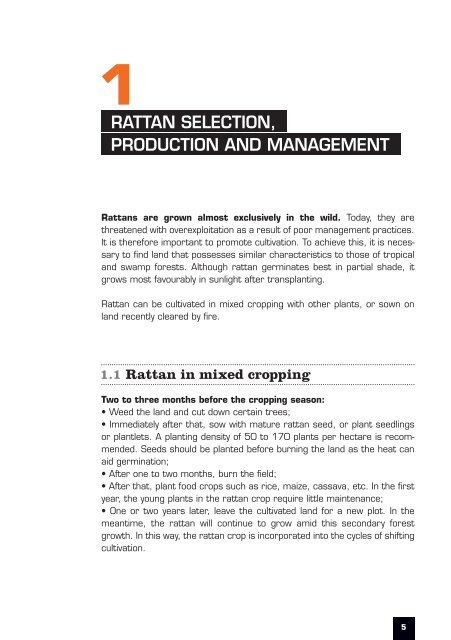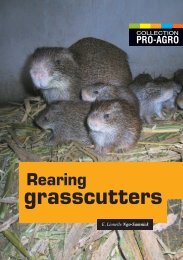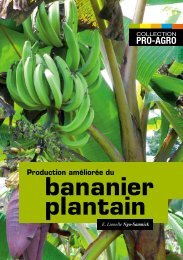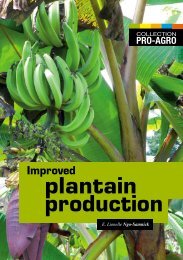Rattan
Download - CTA Publishing
Download - CTA Publishing
- No tags were found...
Create successful ePaper yourself
Turn your PDF publications into a flip-book with our unique Google optimized e-Paper software.
1<br />
<strong>Rattan</strong> selection,<br />
production and management<br />
<strong>Rattan</strong>s are grown almost exclusively in the wild. Today, they are<br />
threatened with overexploitation as a result of poor management practices.<br />
It is therefore important to promote cultivation. To achieve this, it is necessary<br />
to find land that possesses similar characteristics to those of tropical<br />
and swamp forests. Although rattan germinates best in partial shade, it<br />
grows most favourably in sunlight after transplanting.<br />
<strong>Rattan</strong> can be cultivated in mixed cropping with other plants, or sown on<br />
land recently cleared by fire.<br />
1.1 <strong>Rattan</strong> in mixed cropping<br />
Two to three months before the cropping season:<br />
• Weed the land and cut down certain trees;<br />
• Immediately after that, sow with mature rattan seed, or plant seedlings<br />
or plantlets. A planting density of 50 to 170 plants per hectare is recommended.<br />
Seeds should be planted before burning the land as the heat can<br />
aid germination;<br />
• After one to two months, burn the field;<br />
• After that, plant food crops such as rice, maize, cassava, etc. In the first<br />
year, the young plants in the rattan crop require little maintenance;<br />
• One or two years later, leave the cultivated land for a new plot. In the<br />
meantime, the rattan will continue to grow amid this secondary forest<br />
growth. In this way, the rattan crop is incorporated into the cycles of shifting<br />
cultivation.<br />
5








